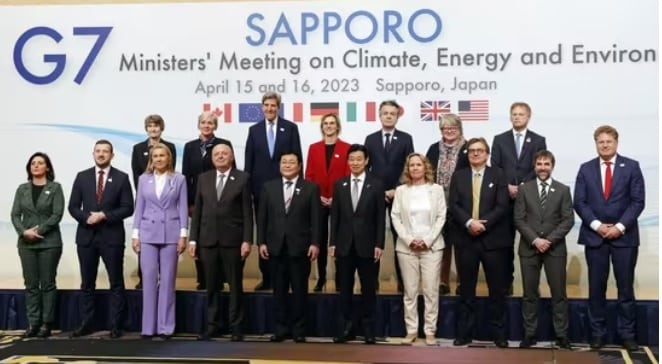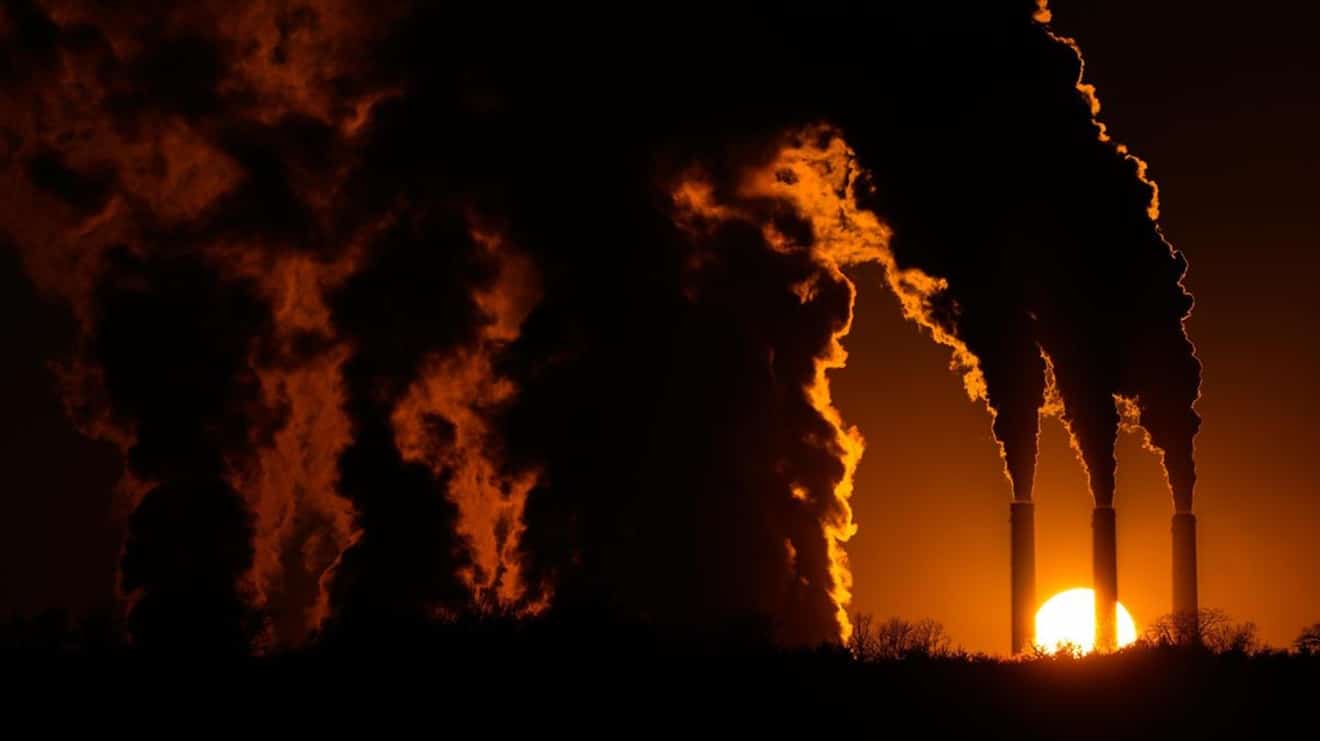What’s in today’s article?
- Why in news?
- What is G7?
- What is the Significance of G7?
- Power of G7
- News Summary: G7 Ministers’ Meeting on Climate, Energy and Environment
- Key highlights of G7 Ministers’ Meeting on Climate, Energy and Environment
Why in news?
- G7 Ministers’ Meeting on Climate, Energy and Environment was held in Sapporo, Japan.
- The participating leaders committed to work towards ensuring carbon-free electricity production by 2035 and “accelerating” the phase-out of coal.
- This is significant as The G7 nations account a quarter of global carbon emissions.
What is G7?
- Origin
- The origin of G7 lies in the oil shocks of 1973 and the corresponding financial crisis.
- In order to address the situation after oil shock, the heads of the world’s six leading industrial nations decided to hold a meeting in 1975.
- These six nations were – the US, UK, France, Germany (West), Japan and Italy.
- These countries were joined by Canada in 1976 and G7 came into existence.
- Current Members
- US, UK, Canada, France, Germany, Italy and Japan are the current members of this group.
- It can be said that the members of this group are the most developed and the advanced economies of the world.
- The European Union is also represented within the G7.
- Purpose of G7
- To determine the course of multilateral discourse
- To shape political responses to global challenges.
- Basically, G7 provides a platform to discuss and coordinate solutions to major global issues, especially in the areas of trade, security, economics, and climate change.
What is the Significance of G7?
- Economic Significance
- As of 2018, the G7 nations account for:
- close to 60 percent of global net wealth ($317 trillion),
- 46 percent of global gross domestic product, and
- about 770 million people or 10 percent of the world’s population.
- As of 2018, the G7 nations account for:
- Political Significance
- Political heavyweights are capable of shaping the response of Multilateral challenges.
- In 1999, it created the Financial Stability Forum in order to manage the international monetary system
- G7 & COVID-19 Pandemic
- 47th G7 summit (held in June 2021) focused on the recovery from ongoing COVID-19 pandemic.
- It promised to distribute 1 billion vaccines to poorer countries
- Its theme was Global Action to Build Back Better.
- Developmental Significance
- G-7 provided $300 million in 1997 to help build the containment of the reactor meltdown at Chernobyl.
- G7 played crucial role in setting up a global fund to fight malaria and Aids in 2002.
- In October 2020, G7 finance ministers backed an extension of a G20 bilateral debt relief initiative for the world’s poorest countries.
- It is also known as Debt Service Suspension Initiative (DSSI).
- It means that bilateral official creditors are, during a limited period, suspending debt service payments from the poorest countries that request the suspension.
Power of G7
- The G7 is not based on a treaty and has no permanent secretariat or office. The agenda of G7 is set by the presiding nation.
- It cannot pass any laws because it is made up of separate nations with their own democratic processes.
- However, decisions taken by G7 have global effects as the member countries are political and economic heavyweights.
News Summary: G7 Ministers’ Meeting on Climate, Energy and Environment
- Climate and Energy Ministers and envoys from Group of Seven (G7) countries met for a two-day conference in Sapporo, Japan.
- Environment Minister of India had also participated in the summit with India being invited as a ‘guest’, in the context of its presidency of the G-20.
Key highlights of G7 Ministers’ Meeting on Climate, Energy and Environment
- Carbon-free electricity production by 2035
- Participating leaders committed to work towards ensuring carbon-free electricity production by 2035 and accelerating the phase-out of coal.
- A proposal to have a 2030 deadline for phasing out coal was shot down.
- The final text gives leeway for continued investment in gas, on the grounds that it could be a stopgap against energy shortfalls.
- Agreed to accelerate solar and wind energy investments
- The participants also agreed to accelerate solar and wind energy investments to produce 1,000 gigawatt (GW) by 2030 from solar power and 150 GW of wind power from off-shore platforms.
- On fossil fuel subsidies
- The leaders reaffirmed that fossil fuel subsidies are inconsistent with the goals of the Paris Agreement.
- They expressed their commitment to the elimination of inefficient fossil fuel subsidies by 2025.
- Net-zero greenhouse gas (GHG) emissions by 2050
- Recognising the current global energy crisis and economic disruptions, participants reaffirmed their commitment of accelerating the clean energy transition to net-zero GHG emissions by 2050 at the latest.
Q1) What are Green House Gases (GHG)?
Greenhouse gases (GHGs) are gases that trap heat in the Earth’s atmosphere and contribute to global warming and climate change. Examples include carbon dioxide, methane, and nitrous oxide.
Q2) What is fossil fuel?
Fossil fuels are naturally occurring substances formed from the remains of ancient plants and animals that have been buried and transformed over millions of years. The most common types of fossil fuels are coal, oil, and natural gas. These fuels are non-renewable, meaning that they cannot be replenished in a short amount of time, and are finite resources. They are also the primary sources of energy used to power many of the world’s industries and transportation systems. However, their use is also associated with a range of environmental and health impacts, including air pollution and climate change.
Source: G7 Ministers commit to move to carbon-free power by 2035 | Hindustan Times
Last updated on January, 2026
→ Check out the latest UPSC Syllabus 2026 here.
→ Join Vajiram & Ravi’s Interview Guidance Programme for expert help to crack your final UPSC stage.
→ UPSC Mains Result 2025 is now out.
→ UPSC Notification 2026 is scheduled to be released on January 14, 2026.
→ UPSC Calendar 2026 has been released.
→ UPSC Prelims 2026 will be conducted on 24th May, 2026 & UPSC Mains 2026 will be conducted on 21st August 2026.
→ The UPSC Selection Process is of 3 stages-Prelims, Mains and Interview.
→ Prepare effectively with Vajiram & Ravi’s UPSC Prelims Test Series 2026 featuring full-length mock tests, detailed solutions, and performance analysis.
→ Enroll in Vajiram & Ravi’s UPSC Mains Test Series 2026 for structured answer writing practice, expert evaluation, and exam-oriented feedback.
→ Join Vajiram & Ravi’s Best UPSC Mentorship Program for personalized guidance, strategy planning, and one-to-one support from experienced mentors.
→ UPSC Result 2024 is released with latest UPSC Marksheet 2024. Check Now!
→ UPSC Toppers List 2024 is released now. Shakti Dubey is UPSC AIR 1 2024 Topper.
→ Also check Best UPSC Coaching in India

















